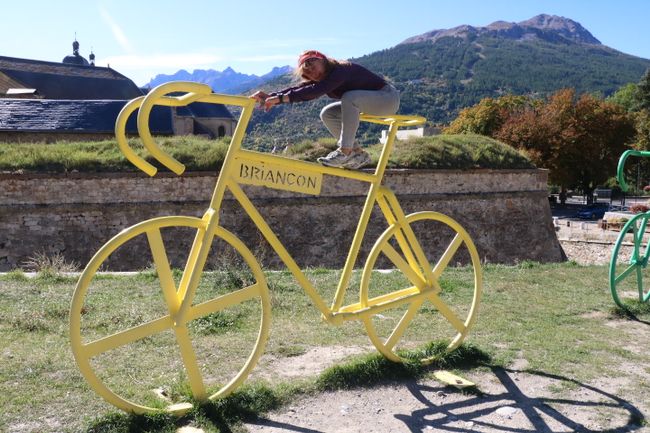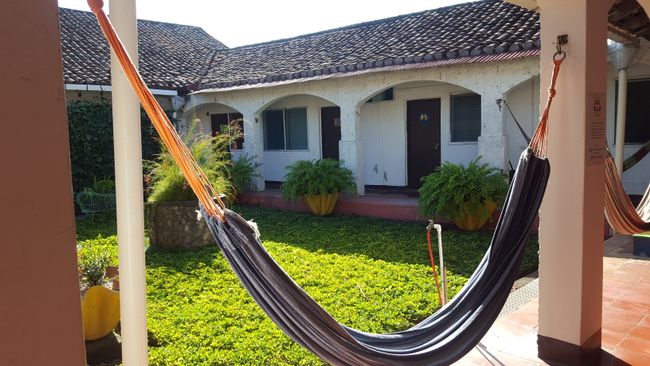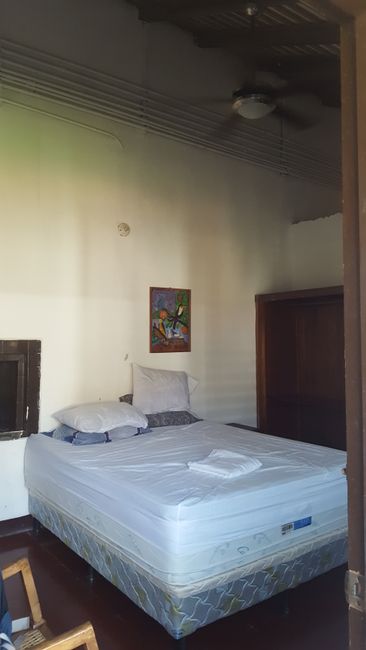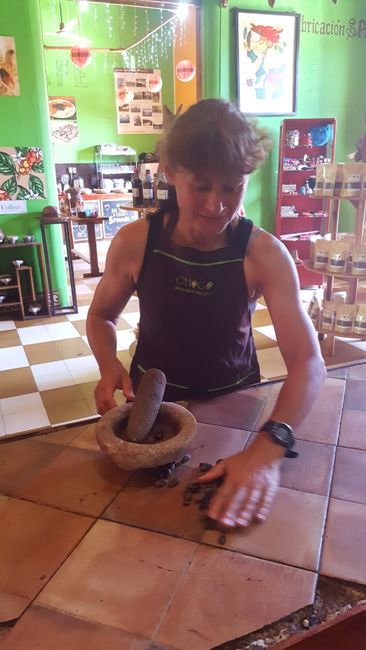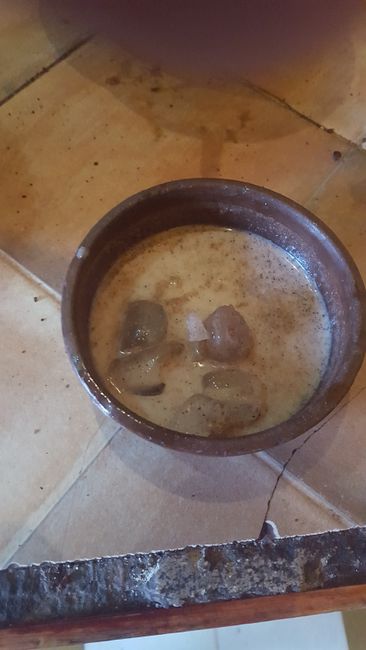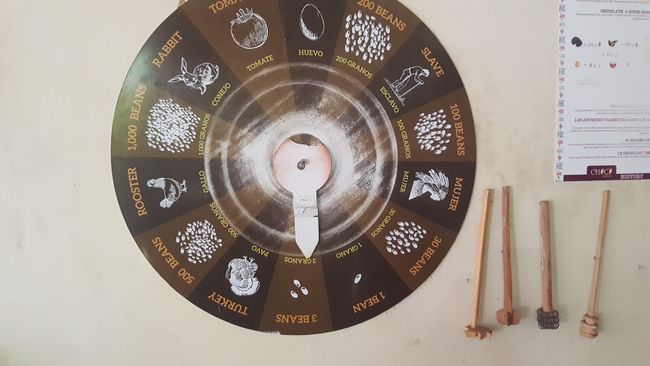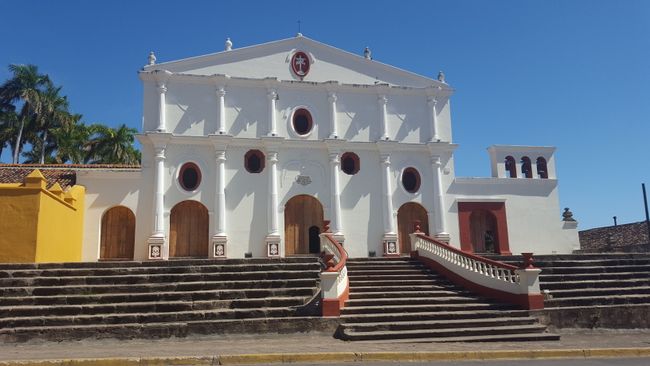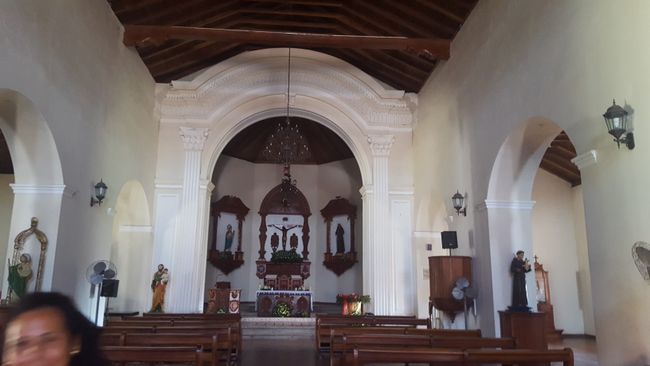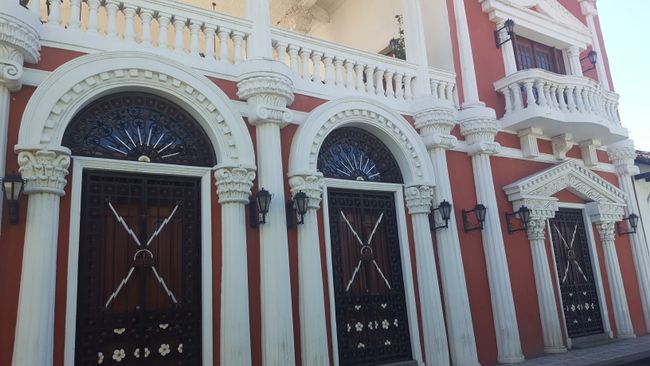14.12.2019 Granada - Chocolate Museum with Workshop & Hotel Change
E phatlaladitšwe: 14.12.2019
Ingwadiše go Lengwalo la Ditaba
After breakfast, I go to the Chocolate Museum. There is a workshop where you can make your own chocolate bar. In the garden of the hotel, where the Chocolate Museum is located, there is a cocoa tree. Each cocoa fruit that grows directly on the trunk contains six to eight beans. A tree can bear between 100 and 120 cocoa fruits. We receive beans which are then roasted on the stove. While roasting, we have to sing and dance. 'Bata, bata, chocolate, bata bata, chocolate'. Or 'bata, bata, ba'.
Then we let the roasted cocoa beans cool down a bit to peel them afterwards. We learn that the peel is not thrown away, but used to make tea. We get a taste of the tea and it tastes really delicious. Almost like hot chocolate. Normally, you have to beat this creamy substance with water in a machine for 12 hours. Since we don't have the time, we use pre-whipped chocolate. We make drinking chocolate once with water and once with milk. Ingredients such as chili peppers, sugar, honey or vanilla are added. We drink the chocolate made with hot water warm. The chocolate made with milk is served cold with ice cubes. Both are very tasty. Afterwards, there is a tasting of chocolate liqueurs. We try chocolate with rum, chocolate with mint, and chocolate with ginger. We also get a small massage on our arms with chocolate lotion. As a highlight, we make our own chocolate bar. We take the already prepared chocolate mass. Then we can add ingredients for decoration, such as cranberries, raisins, nuts, and chocolate chips. Our creation now goes into the freezer and is ready in ten minutes. Now we get a brief overview of the history of chocolate. In the past, beans were traded. We find out what exchange there was for how many beans. For 10,000 beans, you got a woman. For 5,000 beans, you got a slave. White chocolate is not made from chocolate powder, but from chocolate butter. Chocolate butter, which I didn't know, is also used for suppositories. This substance is hard, but becomes liquid when it comes into contact with the body.
We also receive a certificate confirming our participation in the course. And of course, we can take our little chocolate bar with us.
Afterwards, I go to the San Francisco Museum. There is an overview of the history of Granada, many pictures, many religious depictions, and statues. All in all, very interesting.
During lunch at a restaurant on the tourist street, several street vendors come by offering their goods: wooden sculptures that won't fit in any suitcase, small bowls, sunglasses, hammocks, sun hats, etc.
Then I go back to the hotel and get my suitcase. I take a taxi to the new hotel where I will meet the group of my cycling tour from Nicaragua to Costa Rica this evening. As expected, this hotel has a different standard. Due to the price of the trip, I expected that. However, this hotel doesn't have as much charm as the previous, charming hotel in the center.
The cycling group meets at 6 p.m. There are nine of us in total: a Russian, an Irishwoman, two Americans, an Australian, a New Zealander, a Scot, a Canadian, and myself. The guide is from Costa Rica, stutters a bit, and his name is Esteban.
He explains the principle of the trip to us. He as the guide in front and the bus with the daypack at the back, where you can always get in if you're tired.
The fireworks always seem to stop at 8 p.m. in the evening. Maybe there are regulations.
Ingwadiše go Lengwalo la Ditaba
Karabo
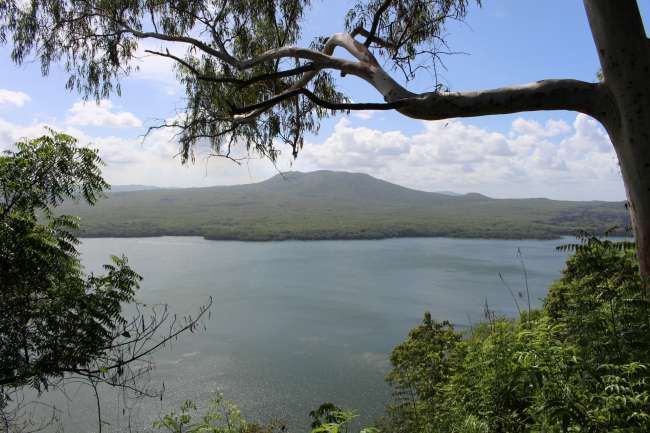
Dipego tša maeto Nicaragua ya go swana le

